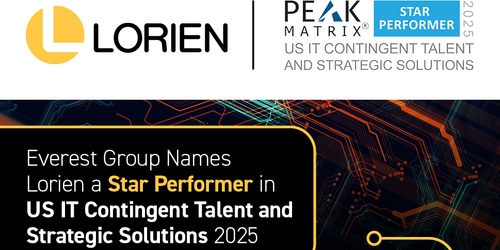Without an effective and well-rounded talent management strategy, attracting and retaining high-quality talent can feel like an uphill battle, seemingly without end. This insight, in itself, isn’t very groundbreaking—and yet organizations across a wide range of industries find it difficult to develop sound, cohesive strategies for managing talent.
What makes it so tricky? Several factors—including confusion about what the most important components of talent management are and a lack of concrete talent management strategy examples employers can use as a template for their own strategies.
Keep reading for an overview of the fundamentals of talent management, including its primary functions and objectives and how to strengthen your organization’s talent management process.
What Is the Main Function of Talent Management?
While its impact can affect the entire organization, the primary scope of talent management relates to a company’s ability to attract, hire, and retain the best available talent. It includes activities aligned with each stage of the employee life cycle, while a company’s broader overall strategy should align with the company’s objectives.
Improving an organization’s approach to talent management provides value in a number of ways, including enhancing the company’s ability to…
-
Identify key vacancies and the impact or cost of leaving them unfulfilled
-
Evaluate different workforce solutions and their feasibility
-
Consider internal talent for upskilling opportunities
-
Monitor, manage, and incentivize employee performance
-
Improve the overall employee experience and workplace culture
-
Make smarter, more efficient workforce planning and strategy decisions
By aligning the right talent management strategies with your organizational objectives, you can…
-
Improve business performance
-
Increase employee retention
-
Reduce costs
-
Empower employees
-
Unlock growth opportunities
Today, companies in virtually every industry benefit from improved talent management strategies. While all companies face their own set of challenges, in certain industries—like tech—the relationship between talent management and business performance is especially clear.
That’s why some staffing agencies will offer specialized recruitment and talent management services (such as Lorien), uniquely tailored to the challenges of attracting and retaining top tech talent, like the increasing demand for—and cost of—highly-skilled personnel.
What Is Talent Management, and How Is It Different from Traditional Human Resources Management?
It’s easiest to think of talent management as being a subset of what has traditionally been considered human resources management (HRM). HRM can involve a wide range of personnel and services, even in companies mid-sized or smaller. Anything that falls under the scope of human resources—including the development and implementation of talent management strategies—is considered HRM.
What Are the Most Important Steps in the Talent Management Process in HRM?
A great starting point for improving your talent management processes is the straightforward talent management model McKinsey has developed. It primarily centers around five areas of talent management, which we can adapt into a 5-step talent management process:
Step 1: Finding the Talent You Need
This begins with identifying key vacancies and determining the organization’s most pressing present—as well as short- and long-term—priorities. Here, modern organizations are smart to evaluate a range of workforce solutions, including permanent and contingent workforce solutions (among others).
A recruiting agency like Lorien can help you determine which solution or solutions will best-fit your business and budget, so you can have all of the information and support you need to make the right decisions.
Step 2: Providing Growth and Development Opportunities
Research consistently shows that employees want their employers to encourage and support their professional growth. Not only does it make their work more fulfilling, it also makes them feel truly valued by their employer. Let the needs of the organization influence the types of growth and development you offer, focusing especially on specific skills gaps in need of solutions.
Step 3: Monitoring and Incentivizing Performance
Performance management is one of the most important aspects of talent management. Of course, managing performance is important, and how an organization chooses to monitor and incentivize employee performance makes a difference, too. Effective performance management requires clear objectives and expectations, with measurable milestones. It also includes meaningful incentives and prioritizes two-way communication—and timely coaching when necessary.
Step 4: Optimizing the Employee Experience
It’s not particularly difficult to see the importance of effective strategies for identifying and recruiting top talent, but a well-rounded approach to talent management considers each individual stage of the employee life cycle.
The cycle starts with attracting and recruiting highly-qualified talent, based on the desired outcomes. From there, it’s important to provide a supportive workplace, one that prioritizes the growth of its employees and provides a positive working environment. Finally, when an employee leaves the organization, both the employee and company benefit from an effective offboarding process.
Step 5: Workforce Planning and Strategy Development
Recent research found that well over half (60%) of global executives “expect that up to half of their organization’s workforce will need retraining or replacing within five years.” Another 28% expect that “more than half of their workforce will need retraining or replacing.”
An effective talent management strategy should be both grounded in reality and prepared for a largely unpredictable future. Noting the “profound” competitive implications of talent management, McKinsey recommends embracing “a more expansive and dynamic view of their talent supply,” meaning “one that tosses out the usual preoccupation with titles and traditional roles and looks instead at the underlying skills people have.”
Ultimately, what’s recommended is a skills-centered approach paired with a flexible mindset that’s open to mixing and matching different talent avenues, from permanent hires to project- or contingency-based solutions.
The Talent You Need Is Waiting…Let’s Talk!
Whether you need a handful of specialized employees for a complex project, or you are a growing company looking to fill out its ranks, we can help. Our expert, experienced team is ready to help you secure the talent you need, when you need it. Learn more about us, or reach out today to get started.








